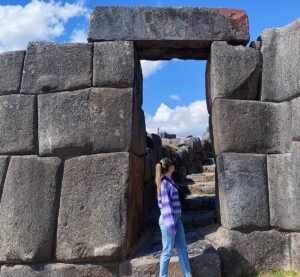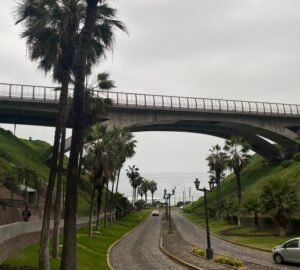A guide to Peru: everything you need to know
By Serena Pedrioli
Welcome to the heart of the Andes, where the ancient ruins of the Incan civilization meet the breathtaking beauty of nature.
Peru, with its more than 1.2 million km², is located on the west coast of South America and borders Ecuador, Colombia, Brazil, Bolivia and Chile. This immense territory is made up of 3 distinctly different regions-Sierra, Costa, and Selva-that make Peru one of the most diverse countries in the world. Peru is home to as many as 12 sites considered UNESCO World Heritage Sites and 84 of the 117 natural areas on our planet.
Its population, which currently exceeds 31.5 million, has Spanish as its official language and 47 other indigenous languages, such as Quechua and Aymara.
Table of Contents
A Little History of Peru
Peru, a land steeped in ancient civilizations and mysteries thousands of years old, has been the stage for a series of extraordinary eras and cultures that preceded the grand Inca civilization that immediately comes to mind when one thinks of this country.
Experts estimate that the earliest indigenous civilizations began to develop in the Andean highlands of this region more than 10,000 years ago with the Early Period, characterized by the construction of terraced temples made of “adobe” (clay brick and straw), circular plazas and villages around administrative and worship centers. This phase saw the creation of iconic sites such as Sechín on the Áncash coast and the Temple of the Crossed Hands of Kotosh in Huánuco.
About a millennium later, the Chavín culture emerged in the north-central Andes, in the Áncash department. While in 700 B.C., another fascinating culture flourished on the central coast: the Paracas, famous for their weaving skills and special burial techniques. Later, during the first centuries AD, several lordships emerged throughout the territory, including the powerful Mochica, who extended their rule along the northern coast of Peru.
A significant step was taken with the advent of the first regional empire, that of the Wari, around 550 AD. These influential rulers, descended from the Tiahuanaco culture developed between Peru and Bolivia, dominated vast regions and created the first pre-Hispanic trails. The Wari laid the foundation for the social and territorial government that would later be inherited by the Incas of Cusco.
With the fall of the Wari around 1200 CE, the Middle-Late Period began, marked by the flourishing of new regional entities. Among them, the Chimú distinguished themselves by building Chan Chan, the largest adobe city in the world. This era also saw the rise of the Chachapoyas, known as the “cloud men,” who populated the dense mist forest of the Amazon. These skilled builders erected incredible cities and mausoleums on steep cliffs, creating an enigmatic legacy still admired by adventurous travelers today.
Peru, with its layered and fascinating history, offers visitors a rare opportunity to plunge into the depths of a past rich in culture and innovation. Every ruin and sacred site tells stories of lost civilizations and millennia-old traditions, making Peru an archaeological and historical treasure to explore.
Source: https://www.peru.travel/it/a-proposito-del-peru/storia
Peruvian regions
Peruvian Sierra - Mountain Region
The Sierra, or mountainous region, of Peru offers some of the country’s most fascinating and well-known destinations.
The majestic Andes are the backbone of the country, with breathtaking mountain scenery and hiking trails leading to hidden archaeological sites. The most famous of these is undoubtedly Machu Picchu, the ancient Inca city situated on a ridge of the Andes, surrounded by the magnificence of the surrounding nature.
The city of Cusco, the ancient capital of the Inca Empire, is a plunge into the past, with its cobblestone streets and welcoming plazas. And then there is the Valle Sagrado, a valley dotted with archaeological sites all worth visiting. Plus cities such as Arequipa, Huaraz, Ayacucho, Hancayo, Chachapoyas and many others.

7-day itinerary to discover the Sacred Valley of the Incas. From Cusco to Machu Picchu

Peruvian Coast
The coastal region stretches from north to south Peru and is a region rich in history, culture, and unique landscapes.
The capital, Lima, is located right along the coast and offers its visitors a combination of modernity and history. Lima is famous for its delicious cuisine, colonial neighborhoods, and numerous museums of history and art.
Moving north we encounter cities such as Huanchaco and Trujillo, home to important Chan Chan archaeological sites. As well as renowned surfers’ paradise beach resorts such as Punta Sal and Mancora.
In the south, however, we encounter places of archaeological interest, such as Nazca with its mysterious Nazca Lines, and natural, with the magnificent beaches of Paracas. While the city of Ica is famous for wine regions, Pisco tastings, and the desert with its oases.
Peruvian Selva - Amazon Region
And then there is the Amazon, the world’s largest rainforest, stretching across northeastern Peru. A realm of extraordinary biodiversity, with flora and fauna found nowhere else on Earth.
Among the cities to visit in this region are undoubtedly Iquitos, the largest city in the world that is not accessible by road, and Puerto Maldonado.
In addition, there are numerous reserves and national parks all to explore: the Manu National Park, the Tambopata National Reserve, and the Amarakaeri Municipal Reserve.
Peruvian Gastronomy
During the past few decades, Peru has gained worldwide recognition for its exceptional cuisine.
The unique flavors of Peruvian cuisine derive from a blend of indigenous, Spanish, African and Asian influences, creating delicious dishes such as ceviche, aji de gallina, lomo saltado and pollo a la brasa.
It is no coincidence then that in 2023, the leading culinary guide “The World’s 50 Best Restaurants 2023” awarded Virgilio Martinez’s Central restaurant as the best in the world. The restaurant is located right in Peru’s capital city of Lima and specializes in Peruvian gastronomic dishes.
To explore Peruvian cuisine is to immerse oneself in a world of sensations, an unparalleled culinary experience that captivates palates around the world and captures the soul of anyone privileged to taste it.
Peru, a surfer's paradise
Peru’s coastline, which stretches more than 2,000 km, is a true paradise for sea and surf lovers. Beaches washed by the Pacific Ocean offer an unparalleled variety of scenery and weather conditions to suit every need.
In the south of the Peruvian coast, beaches are surrounded by unique desert vistas. Here, the waters of the Pacific Ocean are cooler due to the influence of the Humboldt Current, which creates perfect conditions for surfing challenges. The impressive waves attract experienced surfers from all over the world, eager to ride these frothy ridges.
While in the north of the country, tropical beaches are washed by warm waters, thanks to the El Niño current. These climatic conditions make northern Peru a paradise for beginner surfers and those seeking a more relaxing wave experience. Surfers can enjoy dilongated surfing sessions in the hot sun, followed by relaxing beach walks and breathtaking sunsets over the ocean.
Indeed, an article published in the renowned travel and tourism magazine Lonely Planet ranked Peru among the top destinations in the world for surfers. Edited by Sean Jansen and titled “Atrapa una ola en estos 10 países increíbles para surfear,” the article points out that the Peruvian coast with its perfect waves is ideal for novice surfers as well as experienced wave surfers.
In addition to surfing opportunities, the Peruvian coast also offers an ideal environment for other water activities such as windsurfing, kitesurfing, and paddleboarding. Surfing schools along the coast offer lessons for beginners and allow enthusiasts to perfect their skills with the help of experienced instructors.

